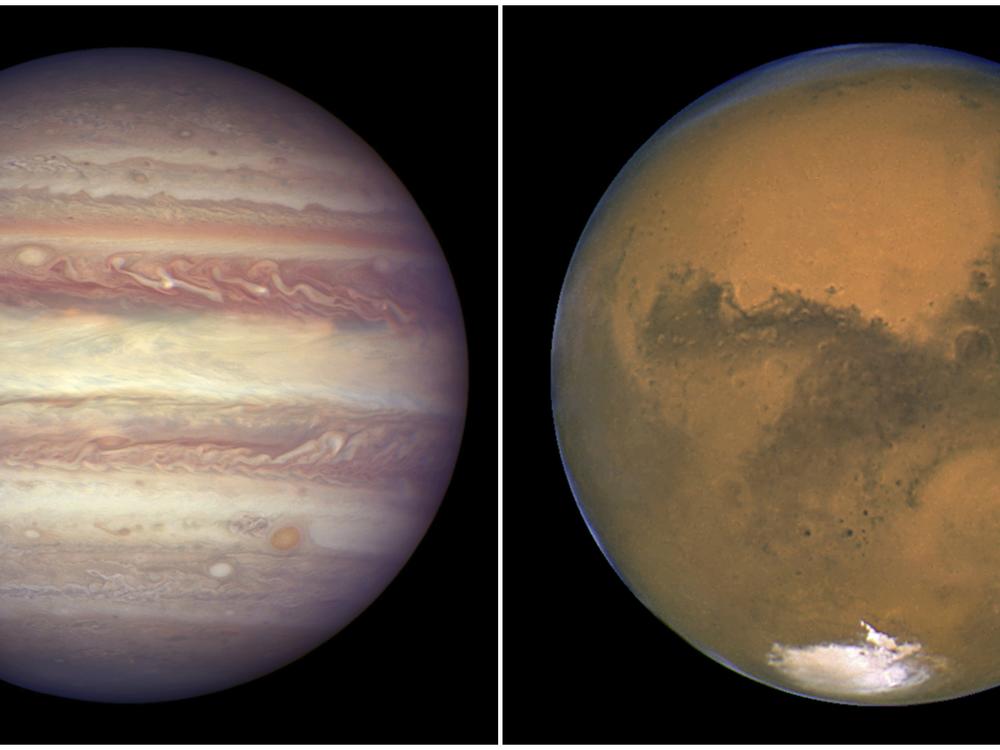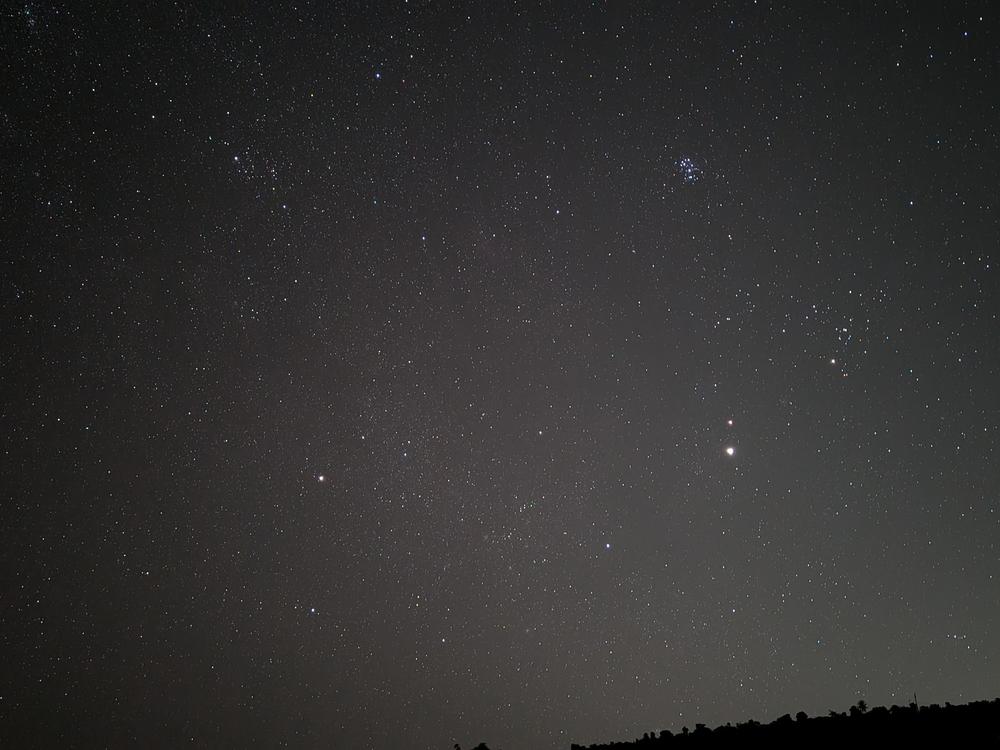Section Branding
Header Content
Mars and Jupiter pair up this week in a celestial dance unseen from Earth in years
Primary Content
Look up at the sky this week and you'll see Mars and Jupiter in a tight lineup not seen for years.
On Wednesday, the two planets will be at their closest proximity to each other from Earth's perspective since 2018.
In reality, the duo will be more than 350 million miles apart from one another. The encounter is an out-of-this-world example of right place, right time. As Mars zips past Jupiter, the Earth will be perfectly positioned in a way that will make the other two planets appear super close, an astronomical event known as conjunction.
It's a celestial optical illusion that will be visible to the naked eye — thanks to the brightness of both planets. The event between Mars and Jupiter will not happen again for another couple of years.
The two planets will appear the closest on Wednesday, and the best time to view the pair is a few hours before sunrise. But spectators can start enjoying the duo now and observe the apparent distance of Mars and Jupiter shrink and later widen, according to Elizabeth Warner, a faculty member at the University of Maryland's Astronomy Department.
"You'll be able to see how these two kind of dance through the sky," she said, recommending that spectators observe the sky in the morning, ideally before sunrise, throughout the week.
After Wednesday, the red planet Mars will start to pull away from the gas giant Jupiter. But there will still be reasons to look up. On Aug. 27, the two planets will be accompanied by the crescent moon, creating a dazzling pack in the sky, according to NASA.
Bottom Content


